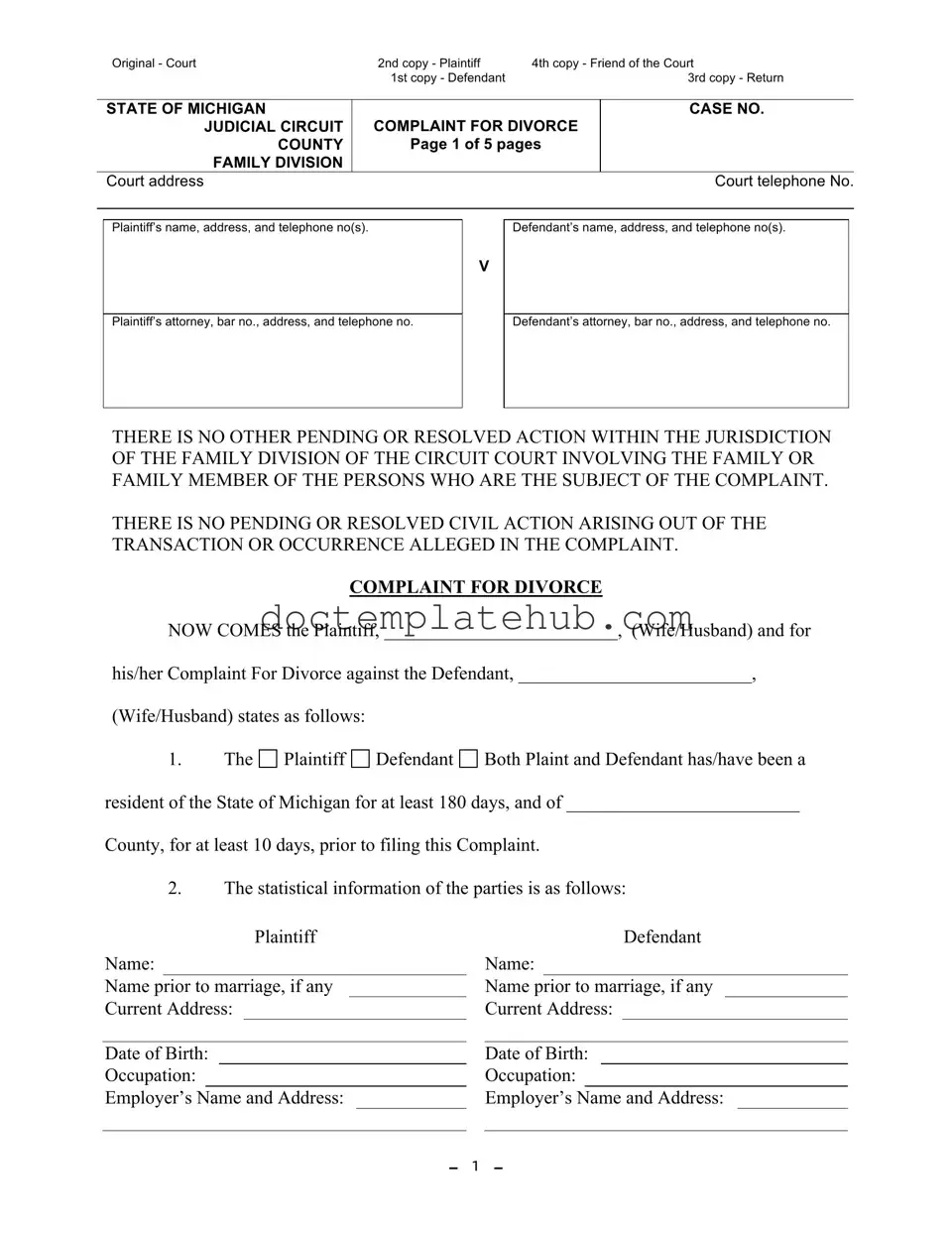What is the Michigan Complaint Divorce form?
The Michigan Complaint Divorce form is a legal document that initiates the divorce process in the state of Michigan. It outlines the basic information about the parties involved, the marriage, and any children or property that may be affected by the divorce. This form must be filed with the appropriate court to start the legal proceedings.
Who needs to file the Complaint Divorce form?
The form must be filed by one spouse, referred to as the Plaintiff, against the other spouse, known as the Defendant. Either spouse can initiate the divorce process as long as they meet the residency requirements set by Michigan law.
What are the residency requirements for filing the form?
To file for divorce in Michigan, at least one spouse must have been a resident of the state for a minimum of 180 days. Additionally, the spouse must have lived in the county where the complaint is filed for at least 10 days before submitting the form.
What information is required in the Complaint Divorce form?
The form requires detailed information about both spouses, including their names, addresses, dates of birth, occupations, and employers. It also asks for information about the marriage, such as the date and location of the marriage, and details about any children from the marriage.
What happens after the Complaint Divorce form is filed?
Once the form is filed, the Defendant must be served with a copy of the complaint. After being served, the Defendant has a specific period to respond. If both parties agree on the terms of the divorce, including property division and child custody, they can finalize the divorce without a court hearing. If there are disputes, a court hearing may be necessary.
Can I represent myself when filing this form?
Yes, individuals can represent themselves in a divorce proceeding, which is known as being a "pro se" litigant. However, it is advisable to seek legal counsel to ensure that all forms are completed correctly and that your rights are protected throughout the process.
What if there are minor children involved?
If there are minor children from the marriage, the Complaint Divorce form requires additional information regarding their custody, support, and visitation. The parties will need to address these issues either through a Separation and Property Settlement Agreement or during court proceedings.
What is a Property Settlement Agreement?
A Property Settlement Agreement is a legal document that outlines how the couple will divide their assets and debts, as well as arrangements regarding child custody and support. This agreement can help expedite the divorce process by resolving these issues outside of court.
What should I do if I need to change my name after the divorce?
If you wish to restore your maiden name after the divorce, you can request this in the Complaint Divorce form. Alternatively, you can choose not to request a name change. The court will address this request as part of the divorce proceedings.
